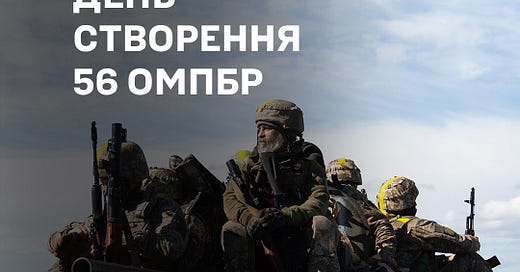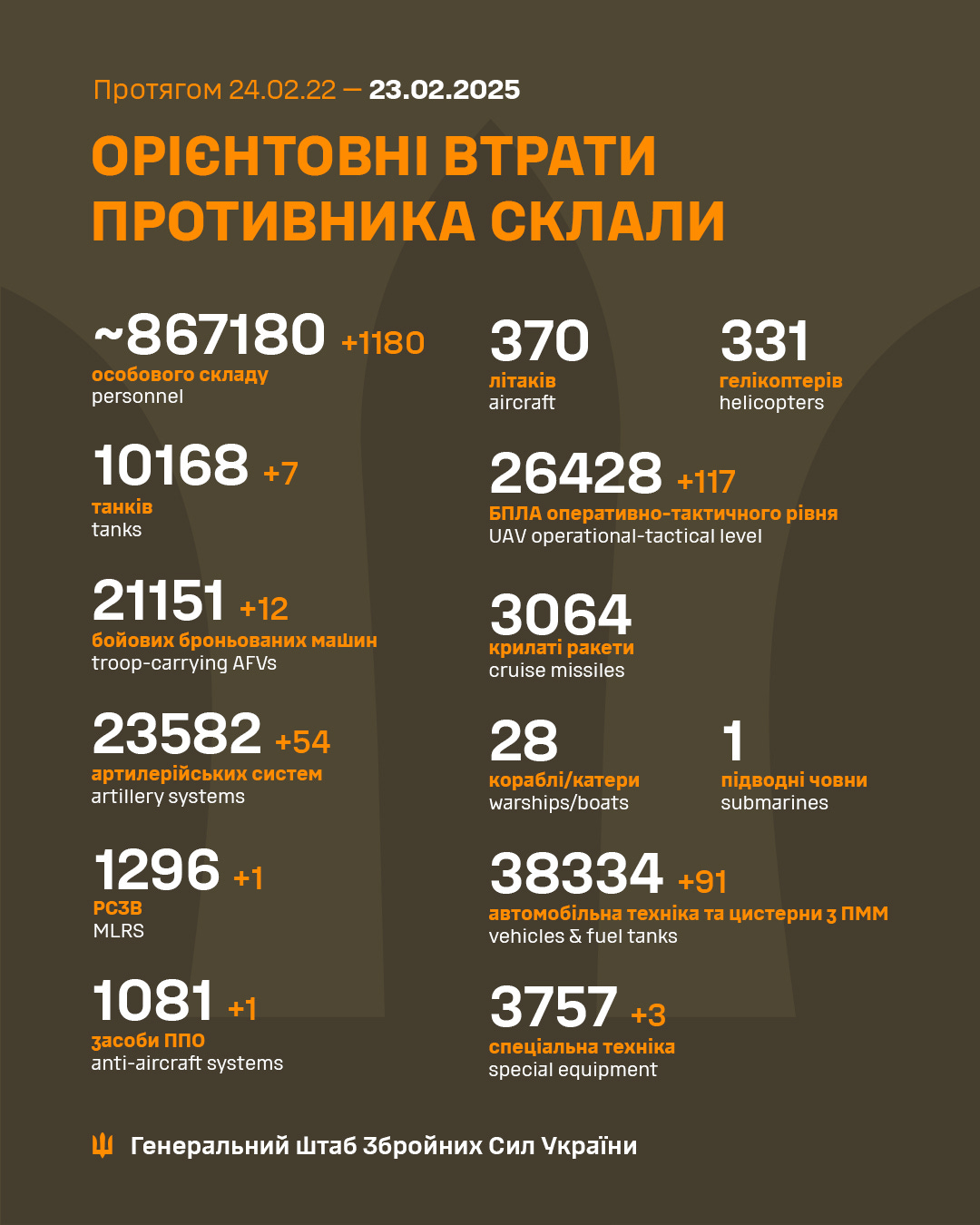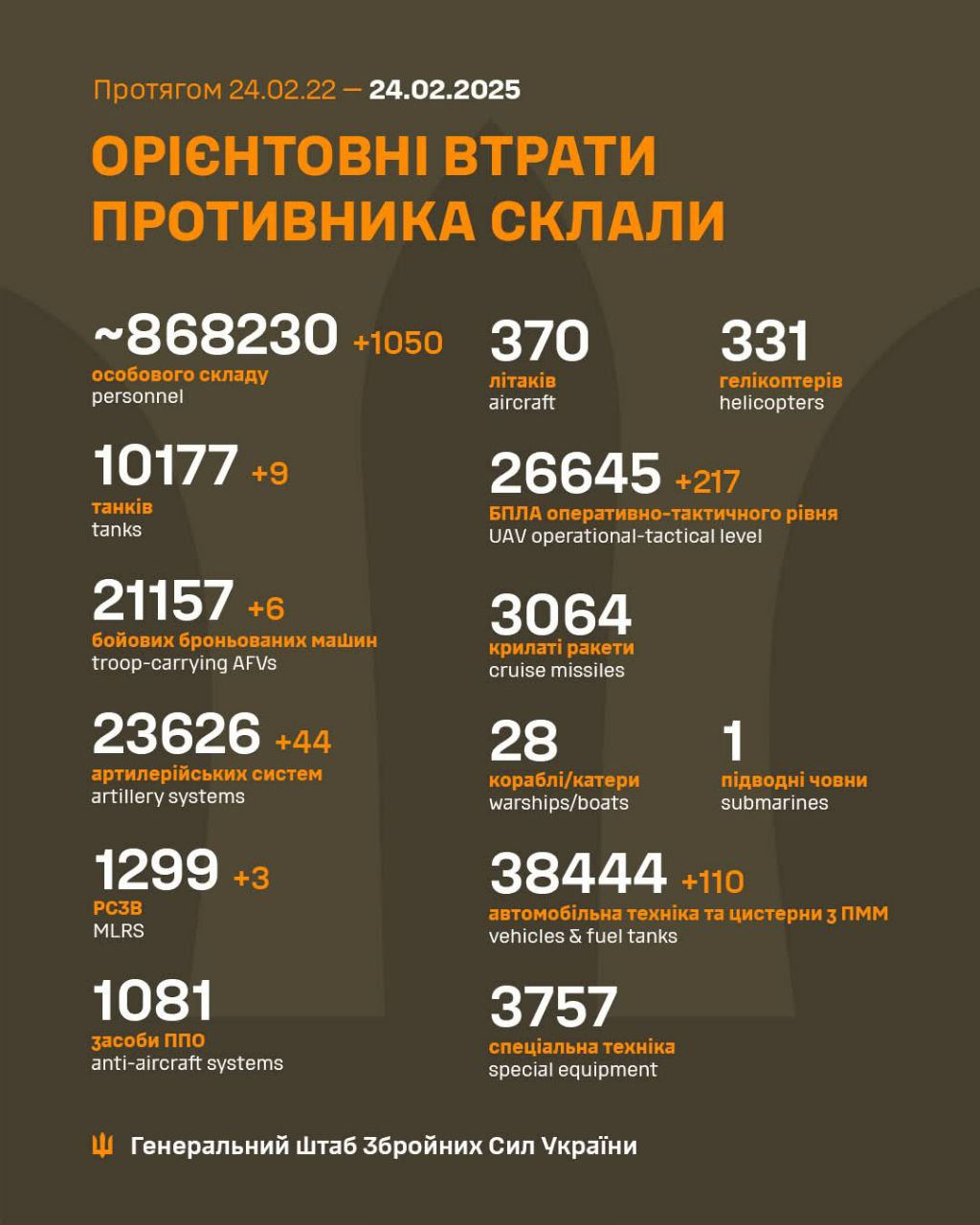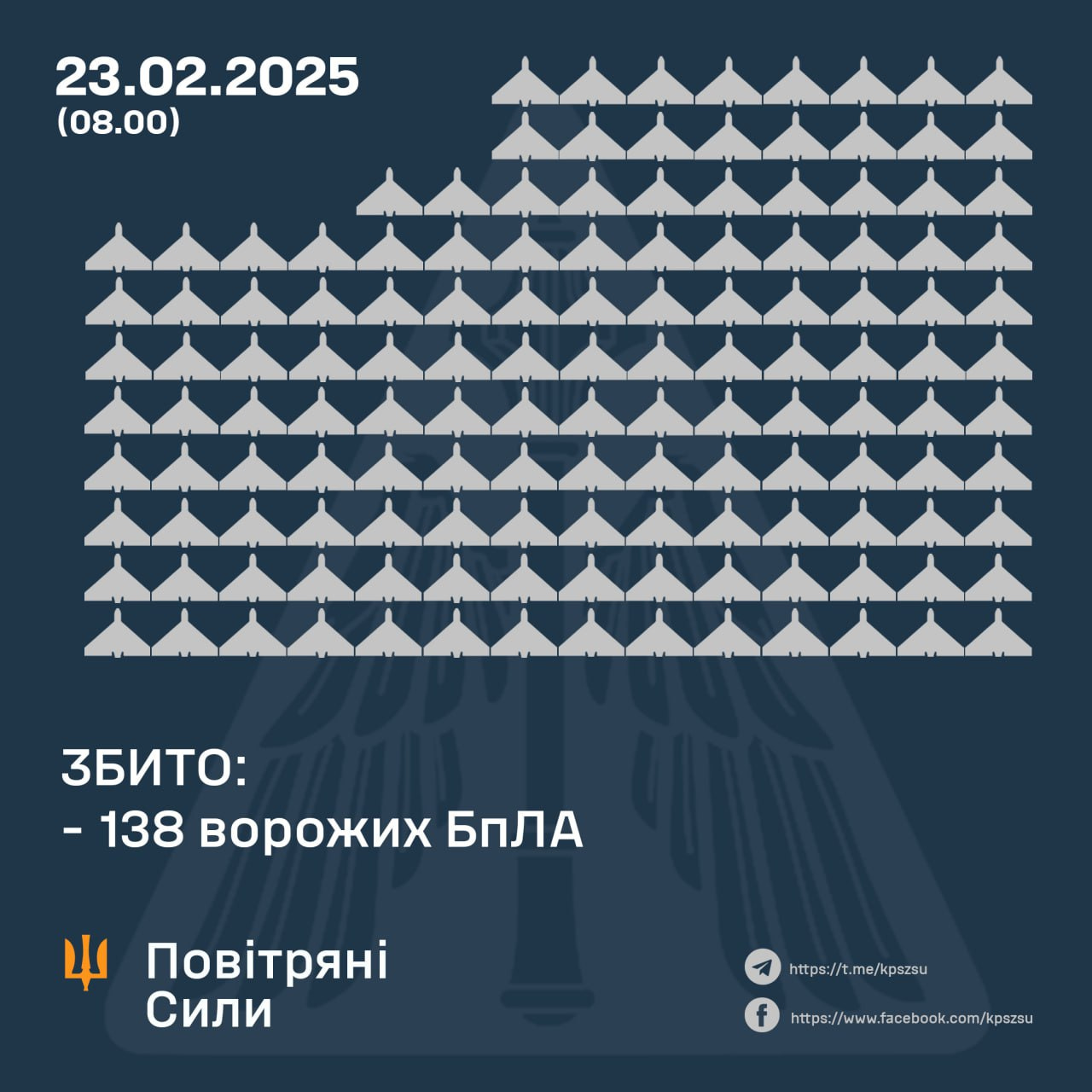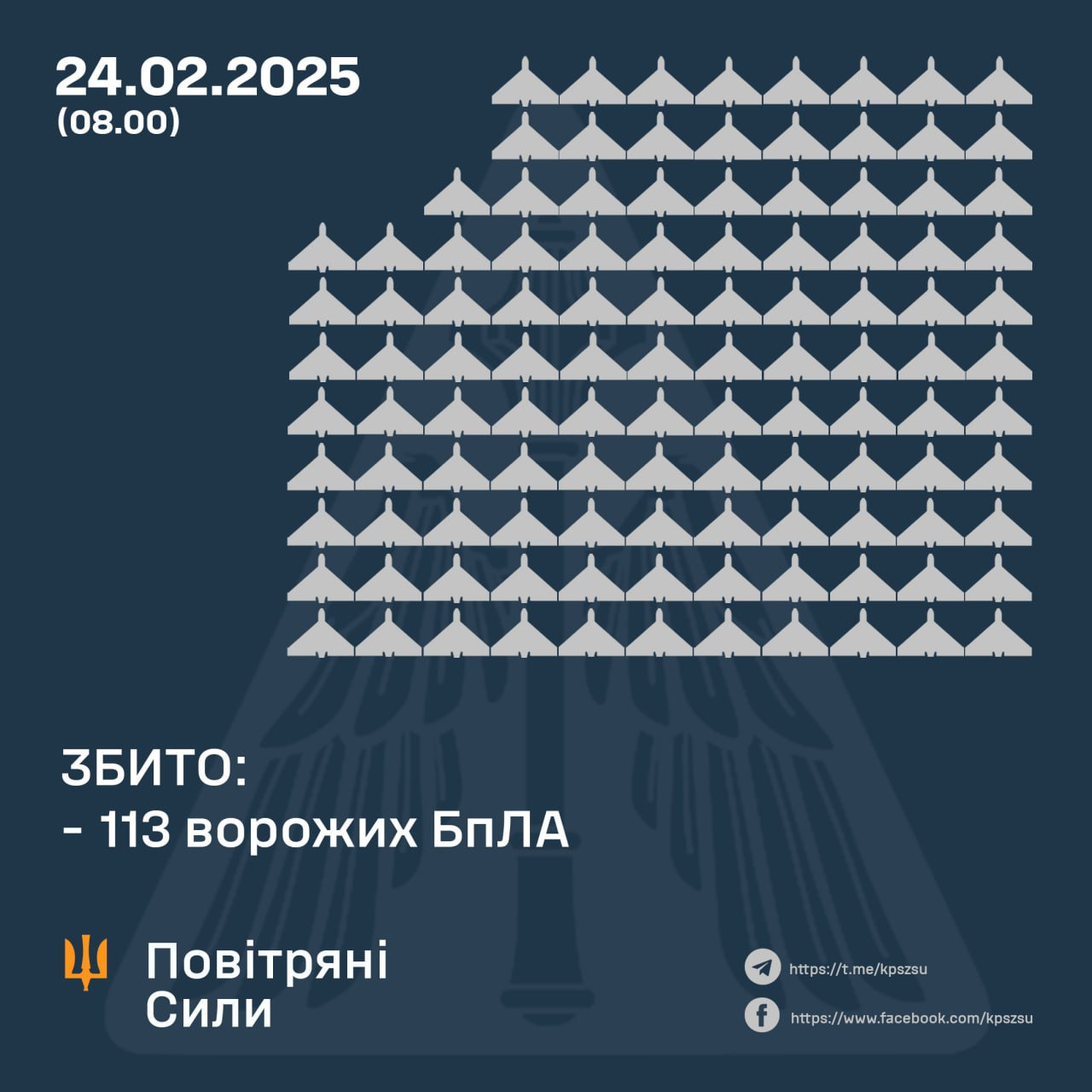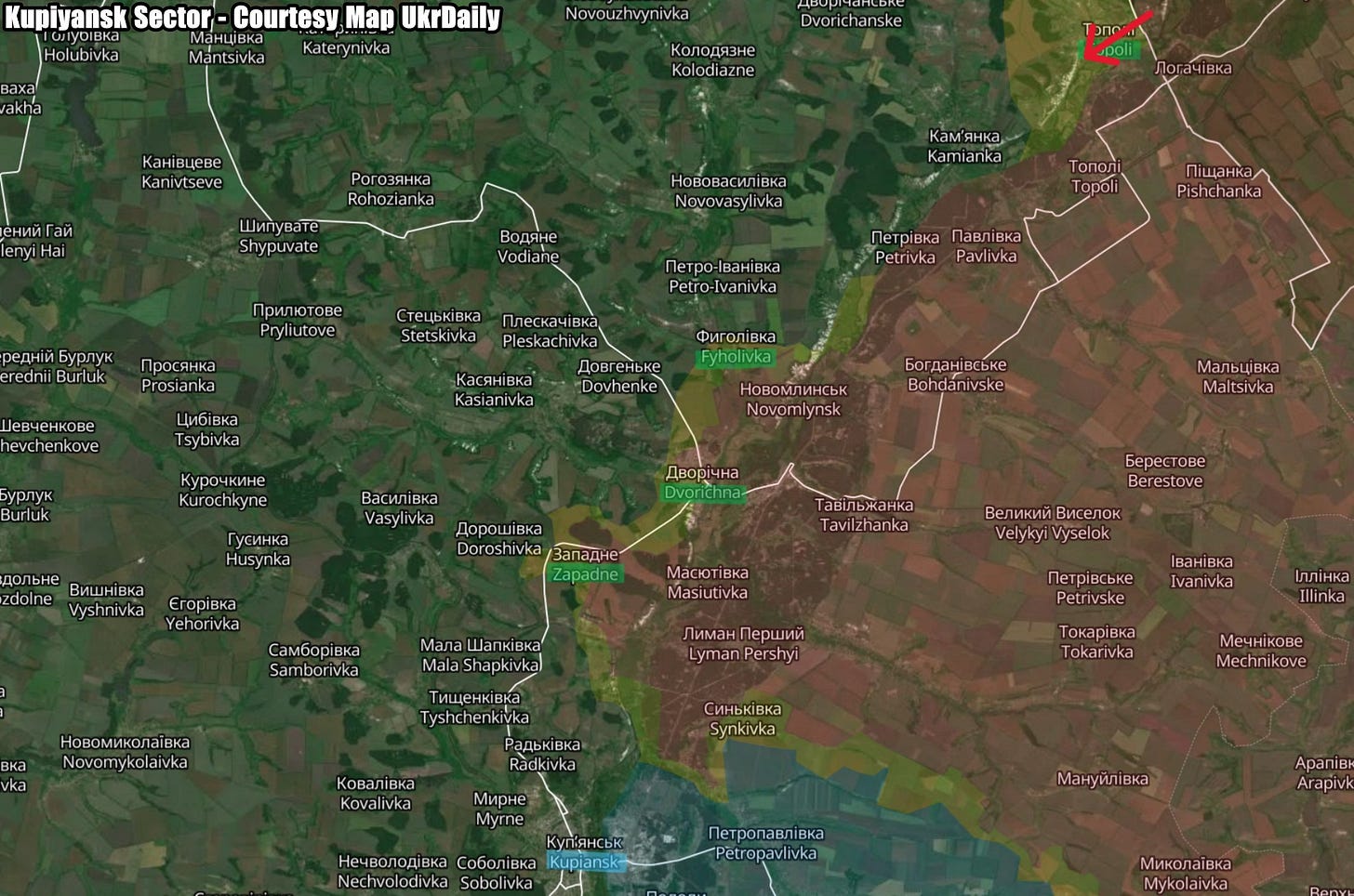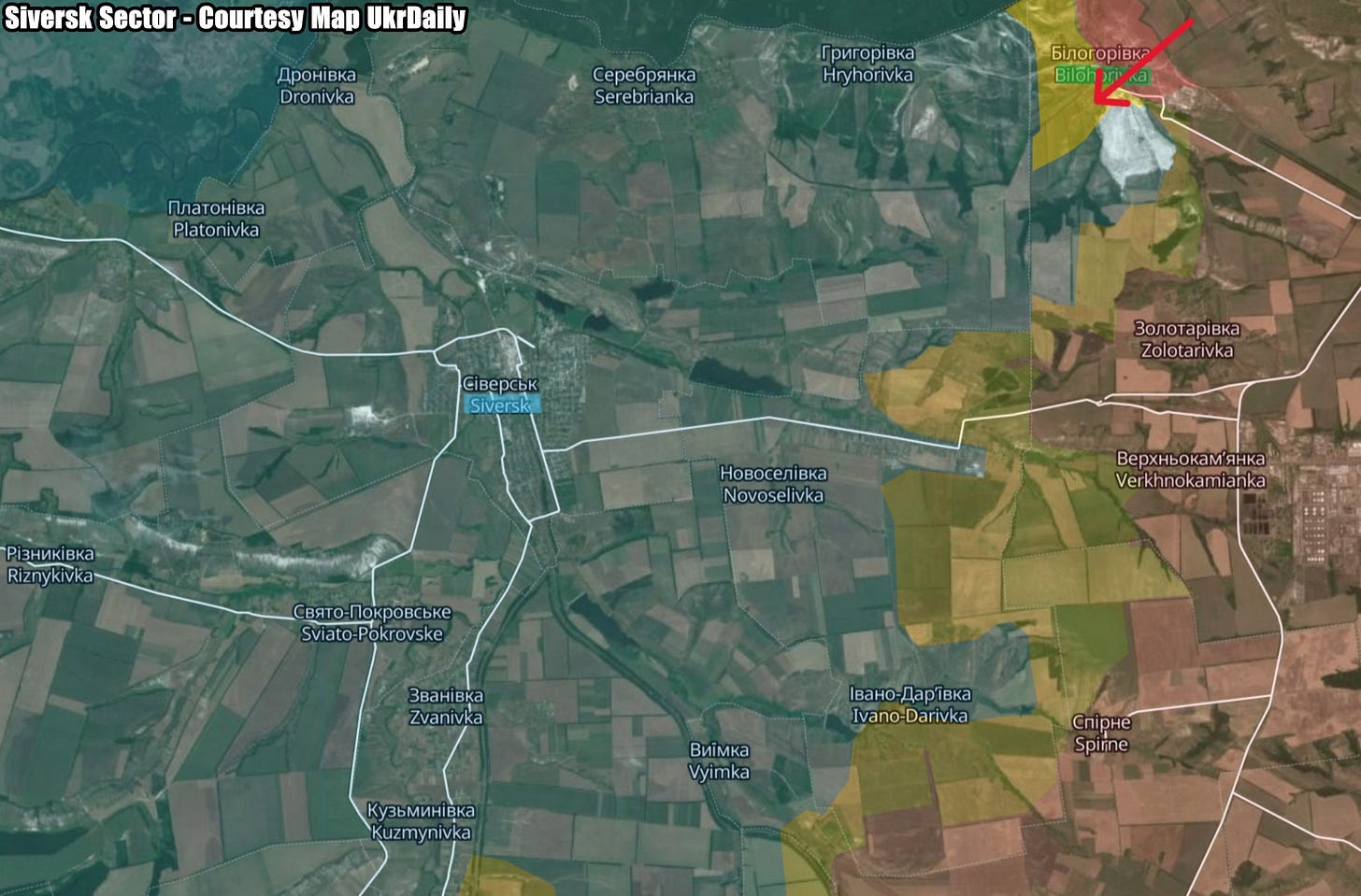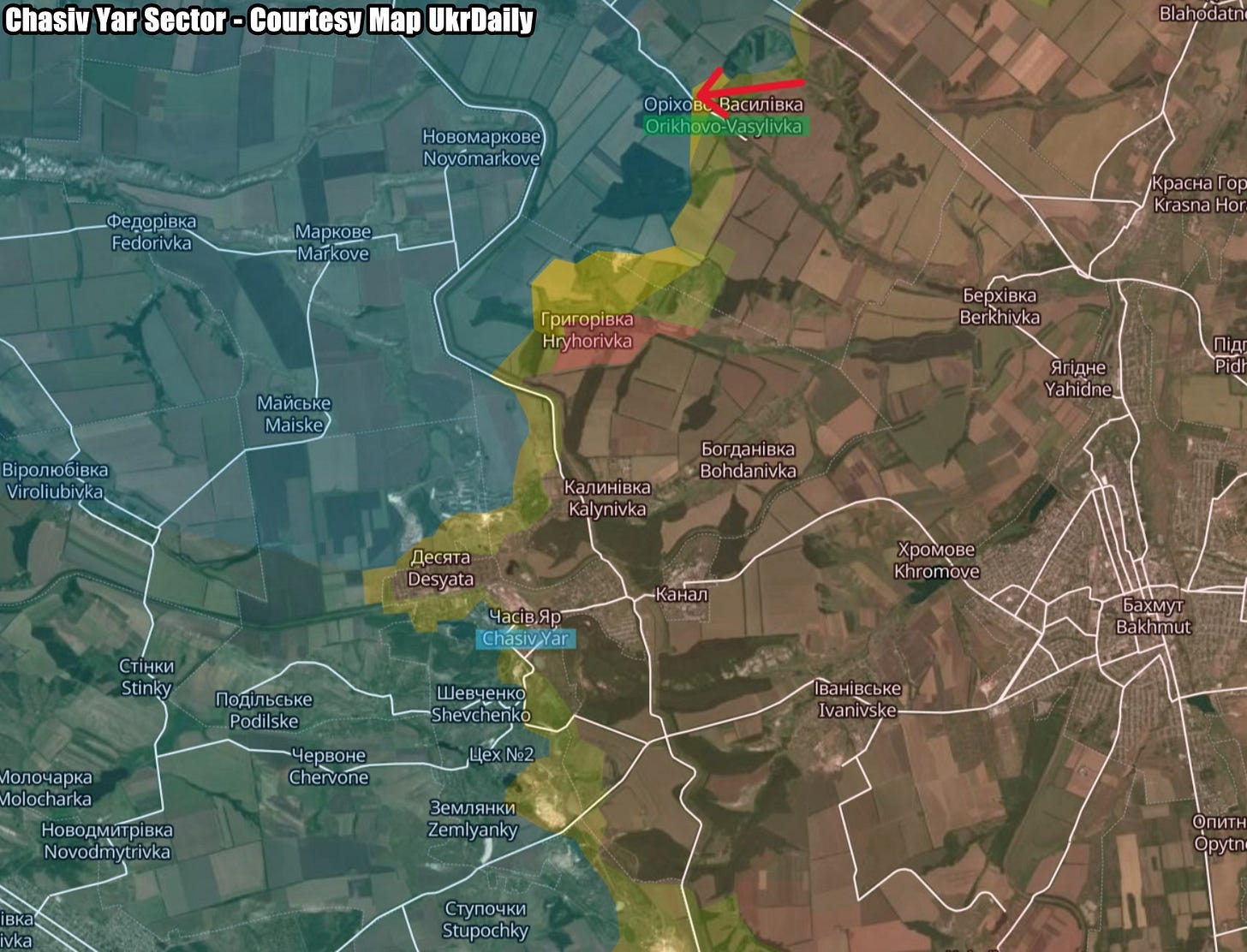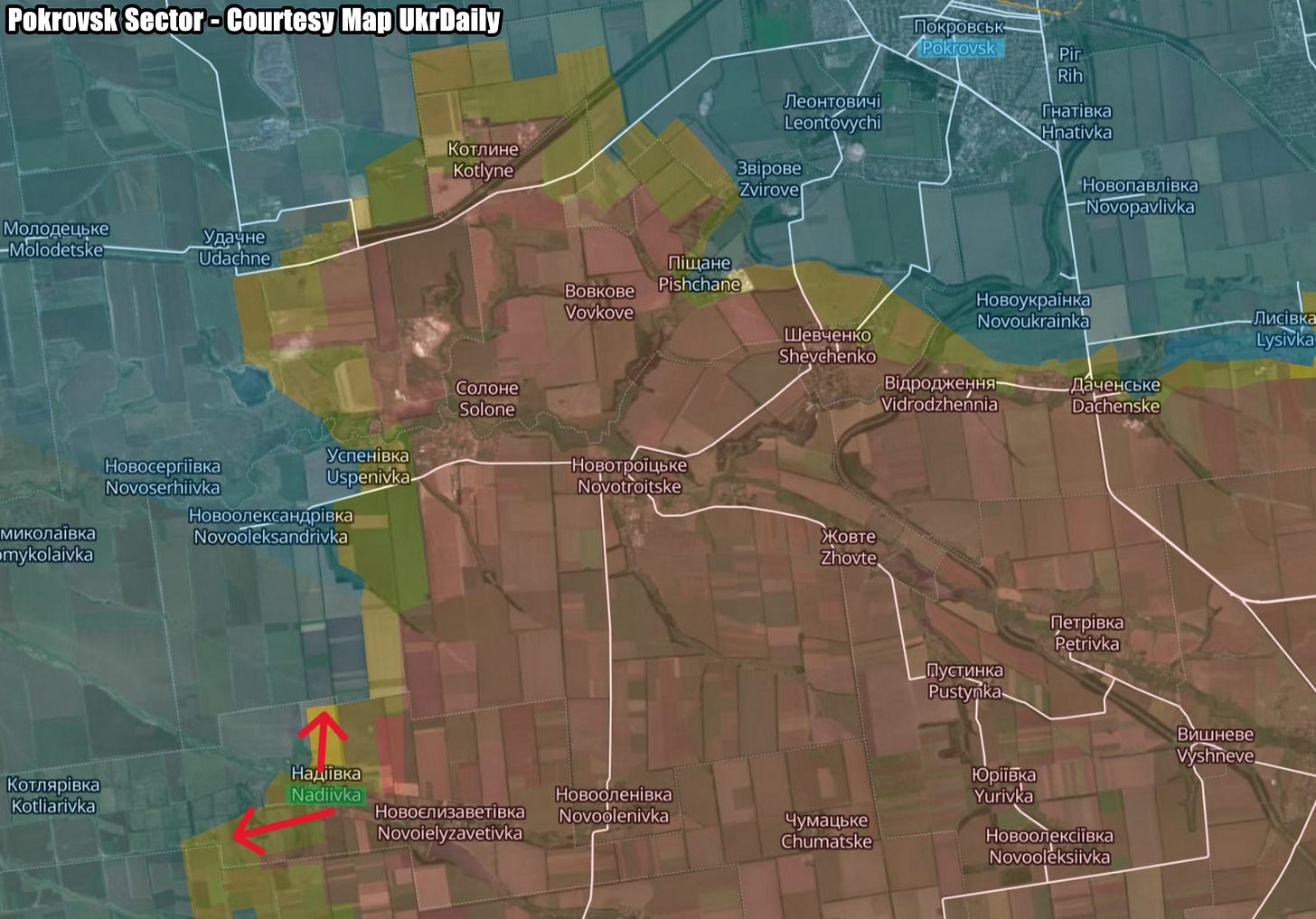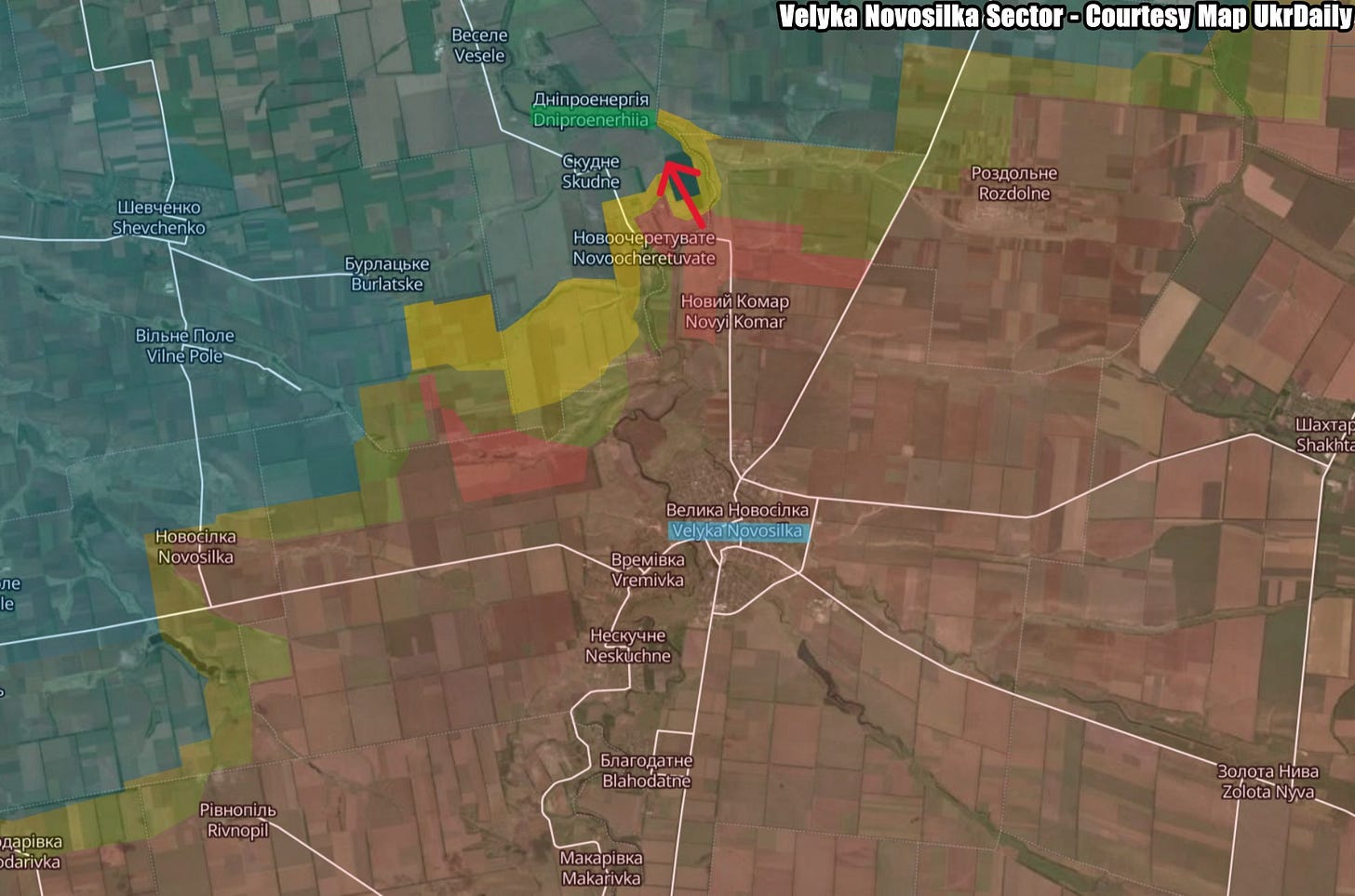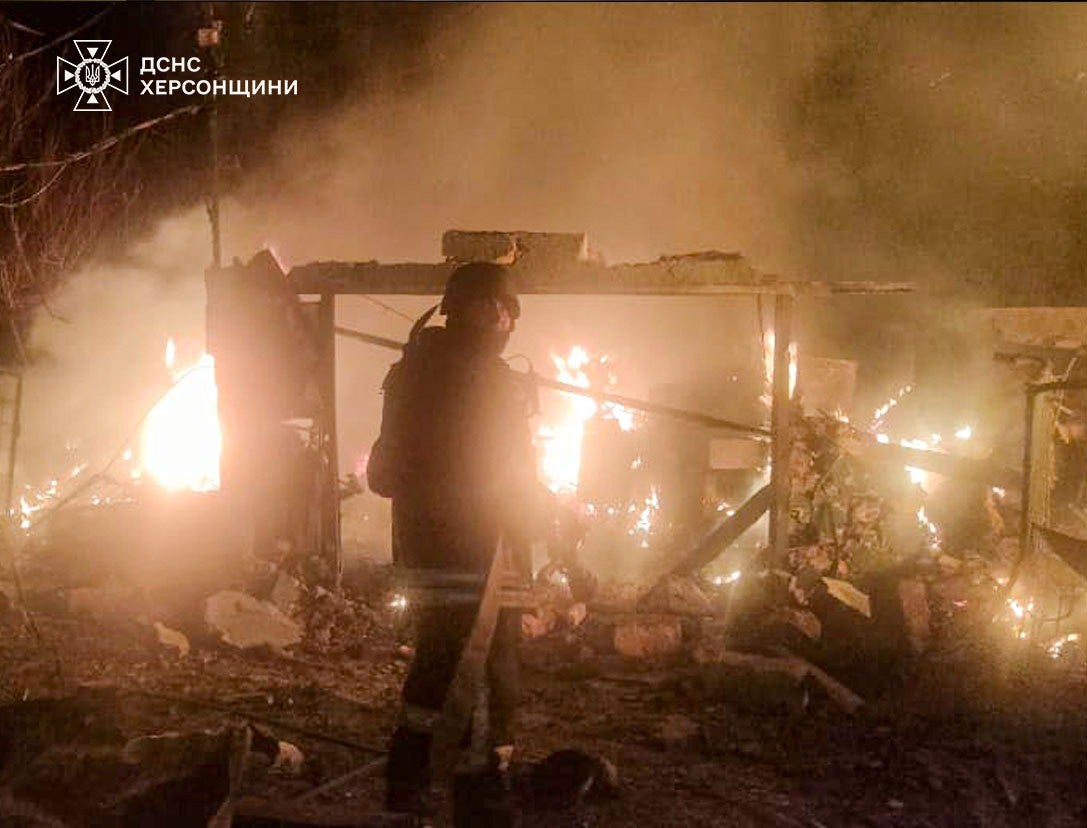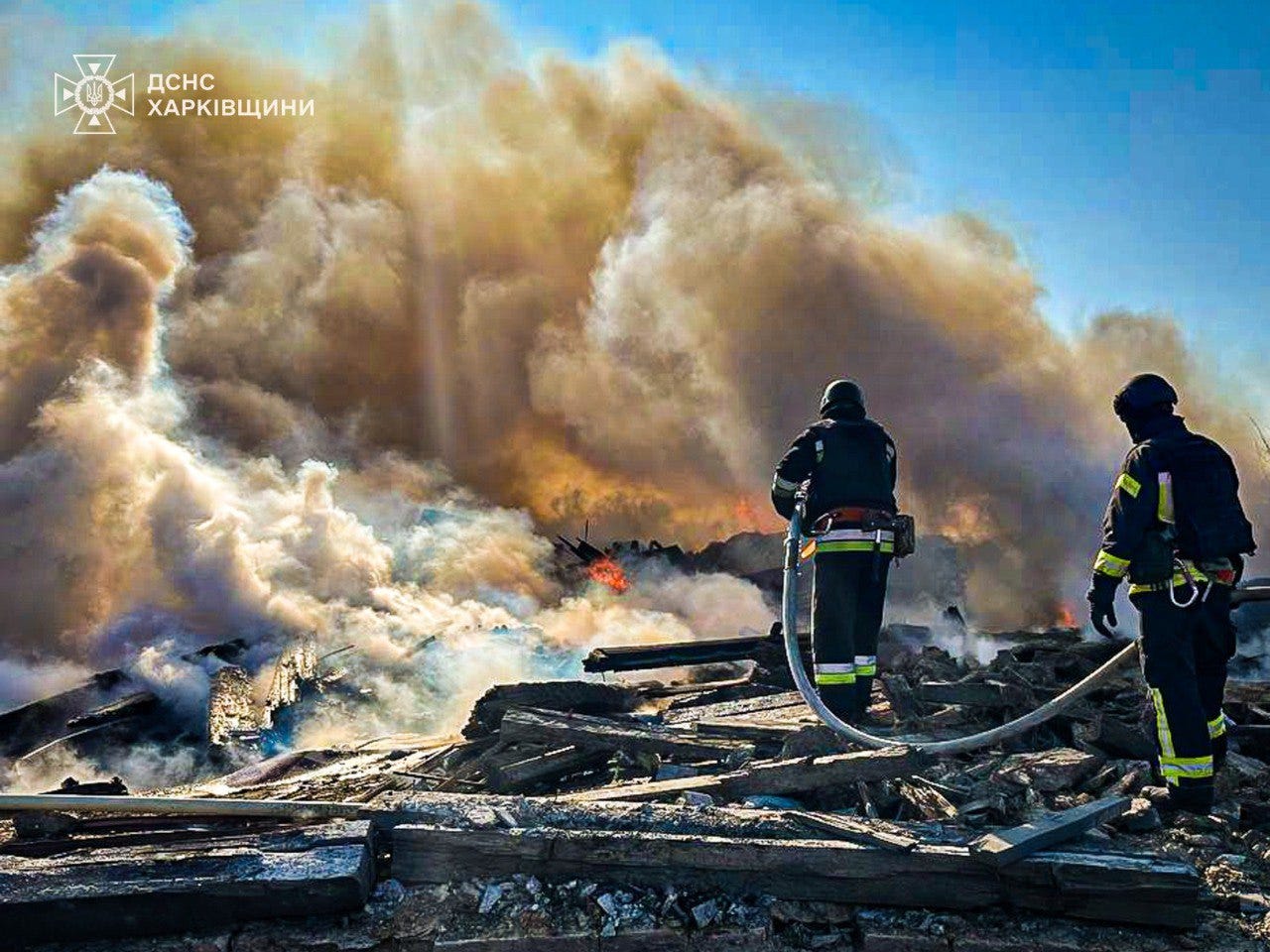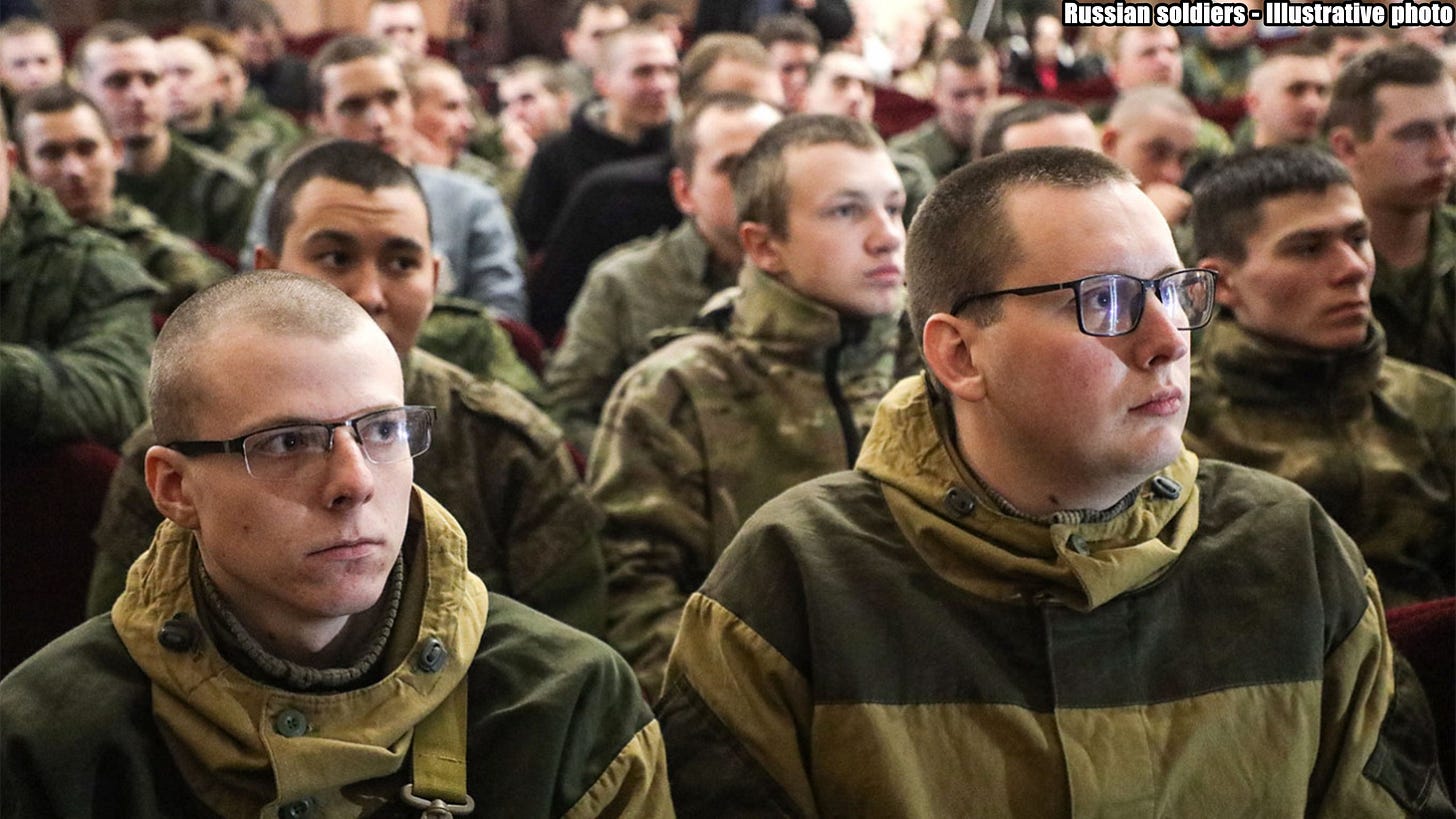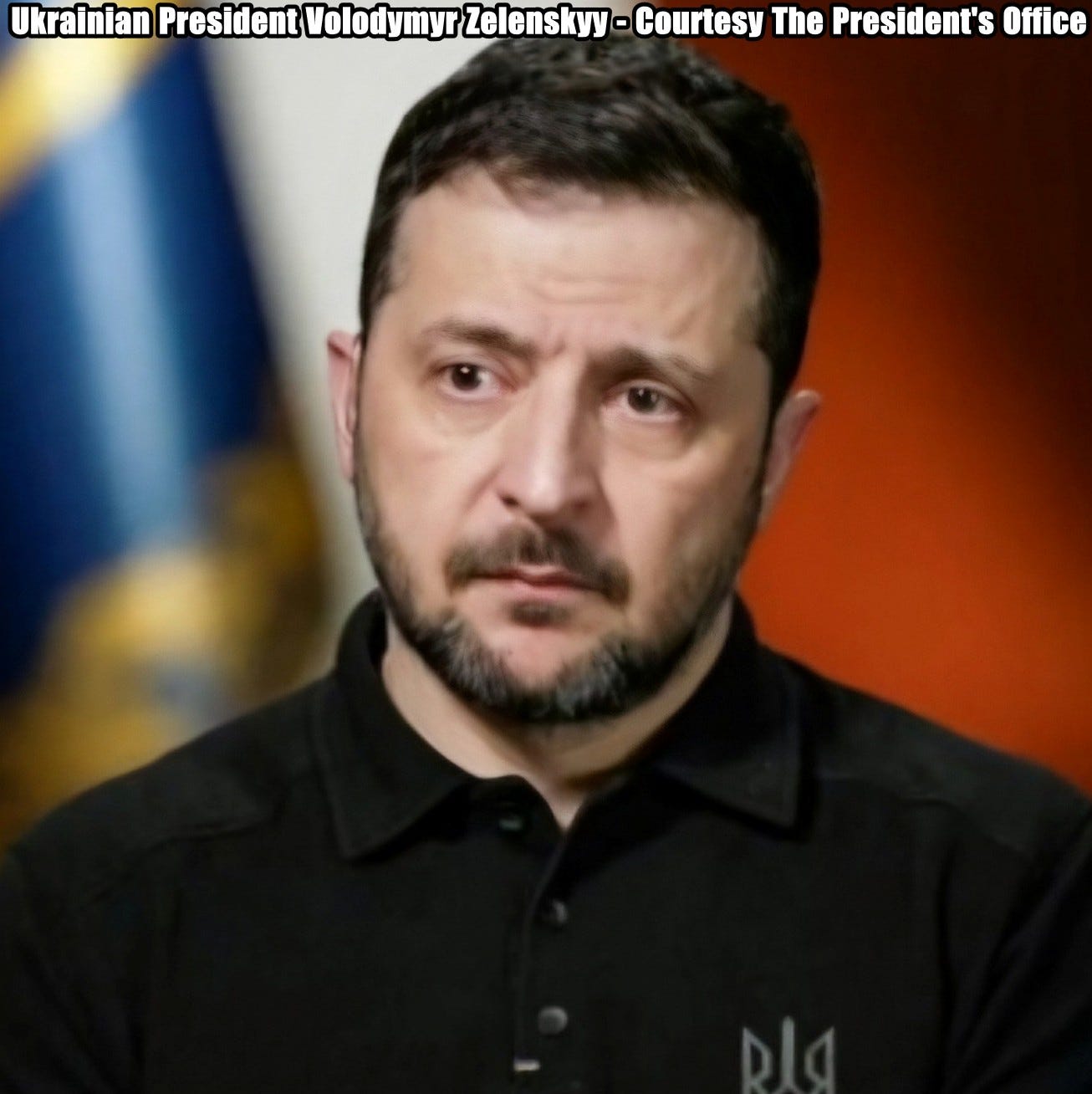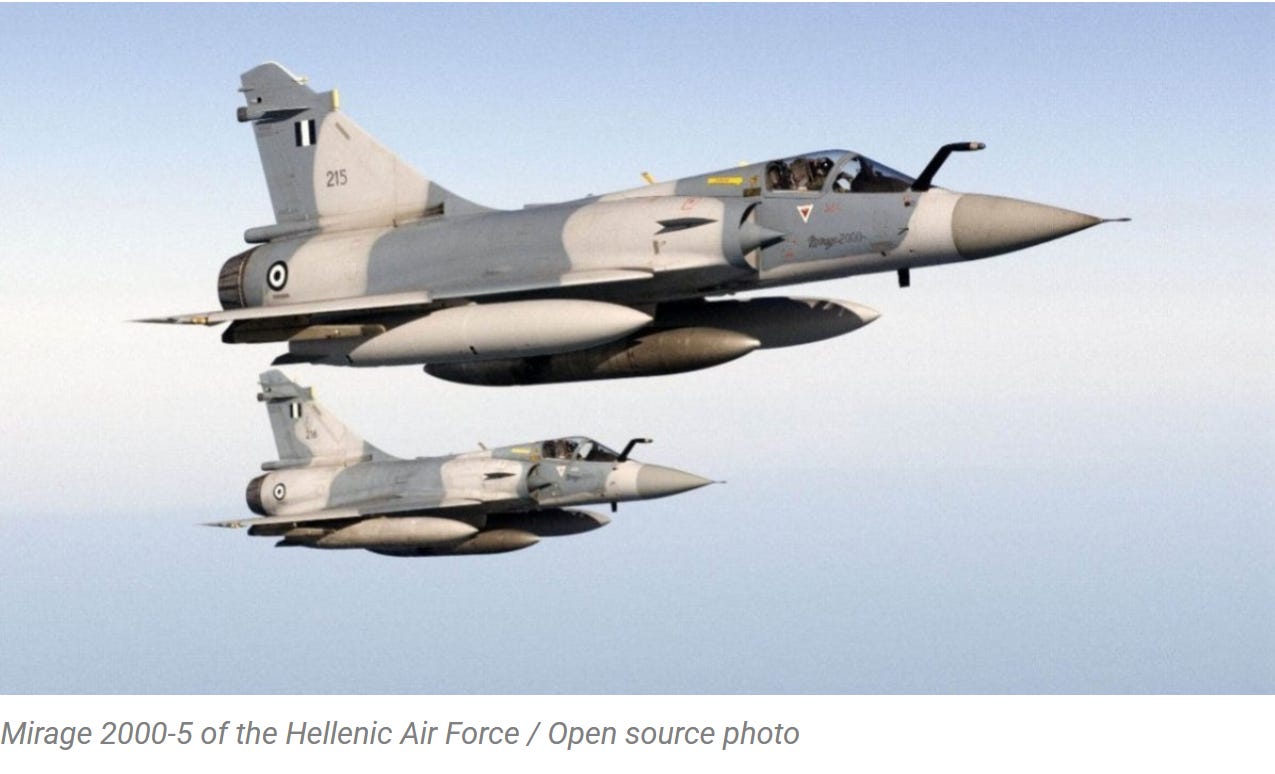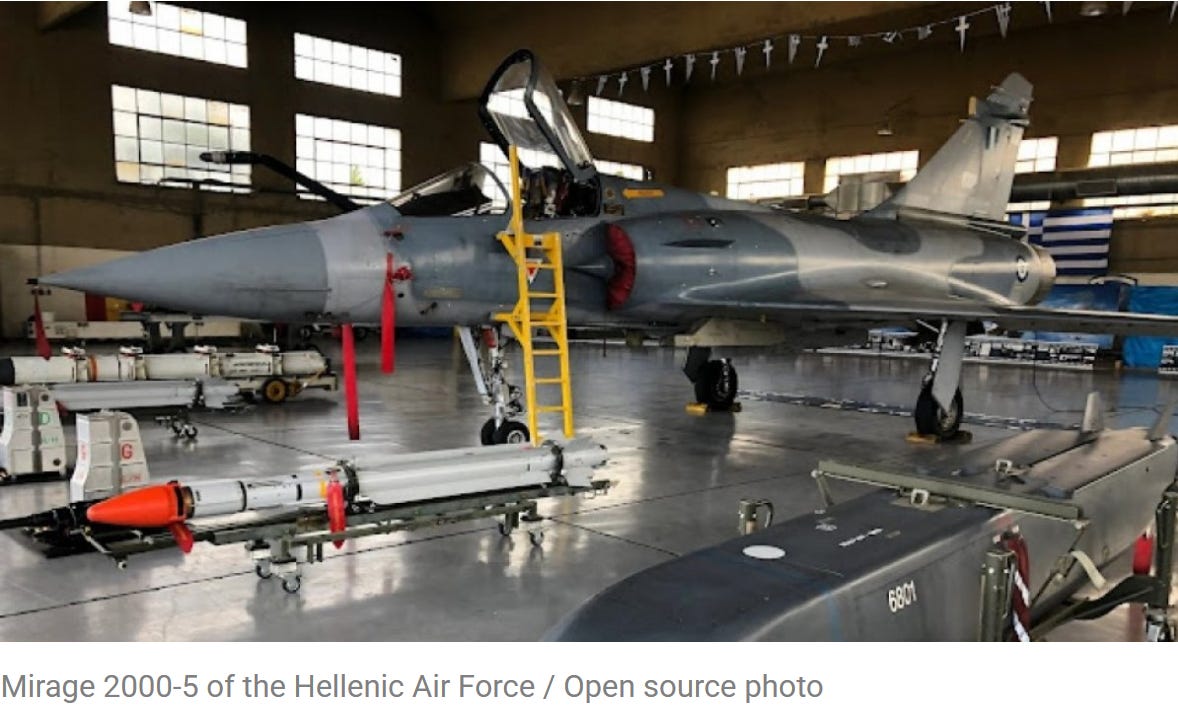Slava Ukraini! In early 2022 I began a Telegram channel aggregating news from a number of sources daily on the war in Ukraine. In June 2023 I began providing a daily draft for the Ukraine War Brief Podcast collecting news from over 70 sources daily, which formed the basis of the script. While the Podcast no longer exists I have continued to make this Brief available for my followers here on Substack for those who wish to keep up with the news from the war.
All the latest news on the Russo-Ukraine War 6 days per week
ALONG THE CONTACT LINE
GSAFU Morning Report
The General Staff of the Armed Forces of Ukraine in its Operational Information update at 08:00 on Feb 24 stated that day 1097 of the full-scale invasion of the Russian Federation against Ukraine had begun.
The situation on the line of combat remains tense in some sectors. Ukrainian defenders continue to actively counteract the Russian aggressor, causing them significant losses in personnel, equipment and technology. Exhausting the enemy along the entire front line and continuing to disrupt the plans of Russian occupiers to advance deeper into the territory of Ukraine.
During the past two days, 208 combat engagements took place.
Over the past 48 hours, the enemy carried out 5 missile strikes, 133 air strikes, used 6,035 drones and fired approximately 10,300 artillery shells across the positions of Ukrainian forces and civilians.
Air Force Daily Report
138 ENEMY UAVS SHOT DOWN, 119 DRONES FAILED TO REACH THEIR TARGETS (LOCATIONALLY LOST)
➖➖➖➖➖➖➖➖➖
On the night of Feb 23, 2025 (from 19:00 on Feb 22), the enemy attacked with 267 Shahed attack UAVs and simulator drones of various types from the following directions: Orel, Bryansk, Kursk, Shatalovo, Millerovo, Primorsko-Akhtarsk - Russia, Chauda - Crimea, as well as three Iskander-M/KN-23 ballistic missiles from Crimea.
The air attack was repelled by aviation, anti-aircraft missile troops, electronic warfare units, and mobile fire groups of the Air Force and Defense Forces of Ukraine.
As of 08:00, it was confirmed that 138 Shahed attack UAVs and drones of other types were shot down in Kharkiv, Poltava, Sumy, Kyiv, Chernihiv, Cherkasy, Kirovohrad, Zhytomyr, Khmelnytskyi, Rivne, Mykolaiv, Odesa and Dnipropetrovsk regions.
119 enemy drones-simulators were lost in the field (without negative consequences), three of them flew towards Belarus, one towards Russia.
As a result of the enemy attack, the Dnipropetrovsk, Odessa, Poltava, Kyiv, and Zaporizhia regions suffered
113 ENEMY UAVS SHOT DOWN, 71 DROPPED INTO THEIR TARGETS (LOCATIONALLY LOST)
➖➖➖➖➖➖➖➖➖
On the night of February 24, 2025 (from 8:00 p.m. on February 23), the enemy attacked with 185 Shahed attack UAVs and simulator drones of various types from the directions: Orel, Bryansk, Kursk, - Russia, Chauda - Crimea.
The air attack was repelled by aviation, anti-aircraft missile troops, electronic warfare units, and mobile fire groups of the Air Force and Defense Forces of Ukraine.
As of 08:00, it has been confirmed that 113 Shahed attack UAVs and drones of other types have been shot down in Kharkiv, Poltava, Sumy, Kyiv, Chernihiv, Cherkasy, Kirovohrad, Khmelnytskyi, Mykolaiv, Odesa, Kherson and Dnipropetrovsk regions.
71 enemy drone simulators — lost in location (without negative consequences).
As a result of the enemy attack, the Dnipropetrovsk, Odessa, Kyiv, and Khmelnytskyi regions suffered.
Combat Operations in the Kursk Sector, Russian Federation
The Institute for the Study of War (ISW), a US based think tank, in its Feb 23 Russian Offensive Campaign Assessment reported that Russian forces continued offensive operations in Kursk Oblast on Feb 23 but did not make any confirmed advances. Russian forces continued ground attacks northwest of Sudzha near Lebedevka and Pogrebki, northeast of Sudzha near Kositsa, and southeast of Sudzha near Guyevo.
The Khortytsia operational-strategic group
(Responsible for the northeastern part of Ukraine. )
Kupyansk Sector: Russian forces continued attacks north of Kupyansk near Zapadne and Dvorichna and northeast of Kupyansk near Fyholivka on Feb 21 and 22.[13] A Russian milblogger claimed that Ukrainian forces conducted an unsuccessful platoon-sized mechanized counterattack from Kutkivka (north of Kupyansk) towards Dvorichna.
Geolocated footage published on Feb 22 indicates that Russian forces recently advanced in central Topoli (north of Kupyansk near the international border).
Siversk Sector: Russian forces recently advanced in the Siversk direction. Russian forces attacked northeast of Siversk near Bilohorivka on Feb 22 and 23.
Geolocated footage published on Feb 23 indicates that Russian forces recently seized Bilohorivka and the quarry south of the settlement.
Chasiv Yar Sector: Russian forces recently advanced in the Chasiv Yar direction. Russian forces attacked northeast of Chasiv Yar near Vasylivka and south of Chasiv Yar near Stupochky and Bila Hora on Feb 21 and 22.]
Geolocated footage published on Feb 22 indicates that Russian forces advanced in the fields north and northeast of Orikhovo-Vasylivka (northeast of Chasiv Yar).
Toretsk Sector: Ukrainian forces recently advanced in the Toretsk direction. Russian forces attacked Toretsk itself and north of Toretsk near Krymske and in the direction of Dyliivka on Feb 22 and 23.
Geolocated footage published on Feb 23 indicates that Ukrainian forces recently marginally advanced in western Toretsk.
The Tavria operational-strategic group
(Responsible for the central-eastern and southeastern part of Ukraine.)
Pokrovsk Sector : Russian forces recently advanced in the Pokrovsk direction. Russian forces attacked northeast of Pokrovsk near Vodyane Druhe; east of Pokrovsk near Promin, Novotoretske, and Yelyzavetivka; southeast of Pokrovsk near Dachenske; southwest of Pokrovsk near Kotlyne, Novooleksandrivka, Bohdanivka, and Udachne on Feb 22 and 23. The Russian Ministry of Defense (MoD) claimed on Feb 23 that Russian forces seized Novoandriivka, although ISW assessed that Russian forces likely seized the settlement as of Feb 4.
Geolocated footage published on Feb 22 indicates that Russian forces recently advanced northeast and south of Nadiivka (southwest of Pokrovsk).
The deputy commander of a Ukrainian battalion operation in the Pokrovsk direction stated on February 23 that Russian forces have intensified drones strikes and reconnaissance, including with fiber-optic drones, in the area. A Russian milblogger claimed that Russian forces operating near Pokrovsk are now operating the same number of drones as Ukrainian forces, but that Ukrainian drones are better quality.
Kurakhove Sector: Russian forces recently advanced in the Kurakhove direction. Russian forces continued attacking west of Kurakhove near Andriivka, Ulakly, and Kostyantynopil on Feb 21 and 22.
Geolocated footage published on Feb 21 indicates that Russian forces recently advanced in western Andriivka.
Velyka Novosilka Sector: Russian forces recently advanced north of Velkya Novosilka. Russian forces continued attacks north of Velyka Novosilka near Skudne and Dniproenerhiia, northwest of Velyka Novosilka near Burlatske, and west of Velkya Novosilka near Novosilka on Feb 22 and 23.
Geolocated footage published on Feb 22 indicates that Russian forces recently advanced in the fields southeast of Dniproenerhiia during a company-sized mechanized assault. The Ukrainian brigade that repelled the assault reported that Russian forces attacked in two columns with a total of 10 armored vehicles and that the brigade destroyed nine vehicles.
The Odesa operational-strategic group
(Responsible for Kherson, Qırım, (also known as Crimea) and the Black Sea.)
There have been no major changes to the combat environment since our last report.
TEMPORARILY OCCUPIED TERRITORIES
Nothing major to report.
THE HOME FRONT
Russia launches war's largest drone attack on Ukraine
Ukraine's President Volodymyr Zelenskyy said on Sunday that Russia on Feb 23 launched more than 200 drones in an overnight attack, the largest of the war, as he condemned Russia's "aerial terror" and called for unity among Ukraine's allies.Reuters reports.
"Every day, our people stand against aerial terror," he wrote on social media.
"On the eve of the third anniversary of the full-scale war, Russia launched 267 attack drones against Ukraine — the largest attack since Iranian drones began striking Ukrainian cities and villages."
Ukraine's air force said in a statement that 138 of the drones were downed and another 119 disappeared from radars after being jammed by electronic warfare, adding that Russia also launched three ballistic missiles. Damage was reported in five regions of Ukraine.
Moscow has launched near-nightly massed drone attacks at Ukraine for months, seeking to exhaust air defences.
Zelenskyy said that in total, nearly 1,150 attack drones, more than 1,400 guided aerial bombs and 35 missiles of various types, were launched by Russia at Ukraine in the past week.
The president thanked those operating Ukraine's air defences, and called on the country's foreign allies to stand united to secure a "just and lasting peace".
"This is achievable through the unity of all partners — we need the strength of all of Europe, the strength of America, the strength of everyone who seeks lasting peace."
Kyiv and its European allies have been unnerved by new U.S. President Donald Trump verbally attacking Zelenskyy last week, as well as by a meeting between U.S. and Russian delegations in Riyadh to which Ukraine was not invited.
Western leaders in Kyiv to mark three years of war, but top US officials conspicuously absent.
Ukraine hosted European leaders on Monday to mark three years of all-out war with Russia, while top U.S. officials stayed away in a clear illustration of President Donald Trump's lurch towards Moscow since returning to power. Reuters reports.
Still reeling from Trump denouncing President Volodymyr Zelenskyy as a "dictator" and accusing him of starting the war, Kyiv said it was in the final stages of agreeing a deal with Washington to provide access to its mineral wealth.
"We hope both US and UA leaders might sign and endorse it in Washington the soonest to showcase our commitment for decades to come," Deputy Prime Minister Olha Stefanishyna wrote on X.
The deal is at the heart of Kyiv's bid to win U.S. support, but officials have wrangled over its wording in the shadow of an extraordinary war of words between Trump and Zelenskyy, who said the U.S. leader was living in a "disinformation bubble".
Zelenskyy refused to sign an earlier draft in which Washington sought $500 billion in natural wealth, protesting that Kyiv had received nowhere near that much U.S. aid and that the draft lacked the security guarantees Ukraine needs.
Beyond the barbs, U.S. officials opened direct talks with the Russian side in Saudi Arabia last week, shutting out Kyiv and Europe in a stunning change of policy on the war.
Zelenskyy, who has told Europe to create its own army while urging Washington to be pragmatic, welcomed a slew of European and other leaders to a summit in Kyiv to commemorate the start in 2022 of the biggest conflict in Europe since World War Two.
"This year should be the year of the beginning of a real, lasting peace. Putin will not gift us this peace, nor will he give it to us in exchange for anything. We have to win peace with strength, wisdom and unity - with our cooperation," Zelenskyy said.
The visitors included European Commission President Ursula von der Leyen, European Council President Antonio Costa and the leaders of Canada, Denmark, Iceland, Latvia, Lithuania, Finland, Norway, Spain and Sweden.
Leaders of Albania, Britain, Croatia, Czech Republic, Germany, Japan, Moldova, the Netherlands, Poland, Switzerland and Turkey spoke by video link. There was no sign of U.S. representation.
"In this fight for survival, it is not only the destiny of Ukraine that is at stake. It's Europe's destiny," von der Leyen wrote on X.
The European leaders rallied around Zelenskyy in speeches, calling for countries on the continent to step up support for Kyiv, while some spoke of the urgent need to increase defence spending.
"We have to scale up as Europeans, we have to speed up ... My guess is that we have a couple of months to take all necessary decisions. Otherwise we'll be too late," Danish Prime Minister Mette Frederiksen told the summit.
RUSSIAN WORLD
Putin is Unlikely to Demobilize in the Event of a Ceasefire Because He is Afraid of His Veterans
The Institute for the Study of War (ISW), a US based think tank, wrote on the eve of the third anniversary of their full scale invasion of Ukraine stated that Russian President Vladimir Putin launched a coordinated campaign in late 2022 and early 2023 to prevent the emergence of an independent veterans-based civil society in Russia, likely out of fear that veteran groups could threaten the stability of his regime upon their return from Ukraine.
The Kremlin launched several initiatives to co-opt loyalist veteran figures and form state-controlled veterans organizations in support of the permanent militarization of Russian society at the federal, regional, and local levels. The Kremlin seeks to silence voices capable of meaningfully objecting to the continuation of Russia’s aggression in Ukraine or questioning Russian government decisions. Putin is likely trying to avoid a modern analog to the veterans-based civil society born from the Soviet withdrawal from Afghanistan.
The Kremlin likely fears political instability such as what followed the Soviet withdrawal from Afghanistan in 1988-1989. It is falsely framing its current initiatives to co-opt veteran life as preventative measures against the reemergence of “Afghan syndrome” — a popular Russian term used to describe the aftermath of the Soviet government’s failure to reintegrate psychologically traumatized Soviet veterans into Russian society upon their return from Afghanistan.
The Kremlin’s decision to launch this campaign indicates that Putin fears the risks and challenges associated with reintegrating over 700,000 veterans into Russian society and thus remains unlikely to demobilize fully or rapidly — even in the event of a negotiated settlement to its war in Ukraine.
The Kremlin likely observed warning signs of the emergence of new political cleavages among Russian veterans after declaring partial mobilization in Sep 2022. The partial mobilization dramatically expanded the pool of Russian veterans and prompted Russian society to pose hard questions about demobilization and the implications of the war on Russia's future.
The partial mobilization also exposed growing inequality between different classes of Russian forces, especially those recruited since early 2022 via an improvised volunteer recruitment campaign.
The Kremlin faced the threat of an emerging veterans opposition movement against the Putin regime between late 2022 and mid-2023 when patrons tried to weaponize Russian servicemen and veterans to advance personal political objectives. The Kremlin did not firmly control the Russian online information space, which allowed certain patrons and ultranationalist figures to try to rile up active servicemen and veterans against the Russian MoD and the Kremlin.
The Kremlin launched various immediate force centralization, censorship, and repression efforts in late 2022 through mid-2023 to eliminate the immediate threat of an emerging anti-Putin veterans civil society. Putin passed two laws in November 2022 and June 2023 that aimed to strip patrons such as Prigozhin of the ability to independently expand and form paramilitary organizations.
The Kremlin launched the Defenders of the Fatherland State Fund in April 2023 as a long-term initiative intended to coopt veterans by monopolizing all veterans support initiatives and funds. Putin signed an executive order on April 3, 2023 establishing the Defenders of the Fatherland State Fund to support veterans of Russia’s war in Ukraine and their families.
The Kremlin established the "Time of Heroes" Higher School of Public Administration in February 2024 to form a new Russian elite composed of a limited number of loyal and ultranationalist veterans that will continue to militarize the Russian society over the long term. Putin announced the establishment of the "Time of Heroes" initiative on February 29, 2024, and stated that veterans of the Russian war in Ukraine should form the Russian elite because such people would not "retreat" and will not "betray" Russia.
The Kremlin appears to be using the "Time of Heroes" program to elevate ardent ultranationalists and loyalists to positions of power on the local, regional, and federal levels under the guise of empowering veterans. The “Times of Heroes” program appears more likely to elevate Kremlin loyalist Russian veterans without combat experience who served in rear-echelon posts than combat veterans. Russian opposition outlet in exile Novoya Gazeta identified that at least 18 of 83 participants of the first "Time of Heroes" cohort (more than 20 percent) had previously worked in government or the non-military state security apparatus.
The Kremlin has seemingly been successful in alleviating the immediate threat of the alienated veterans' civil society in mid-2023 and has been relatively successful in ensuring that the Putin regime does not face a similar political threat in the short term.
The Kremlin's veterans’ life and civil society initiatives are unlikely to meaningfully prepare Russia for mass reintegration of veterans into society and prevent the "Afghan syndrome" in the long run, however.
Russia is already struggling to alleviate symptoms of "Afghan syndrome" among a limited number of returning veterans, and the scale of the problem will only expand if the Kremlin demobilizes mobilized personnel, contract servicemen (kontraktniki), and irregular forces rapidly or at scale. The number of violent crimes in Russia reportedly increased by almost 10 percent in Russia in 2023 after some Russian veterans returned home, and independent estimates suggest that Russian veterans have killed at least 242 Russian civilians upon their return from the frontlines.
The Kremlin's reliance on prisoner recruits and efforts to appease veterans will create a long-term societal problem for the Kremlin as it increasingly enables veterans to escape punishment by enlisting. The demographics of the Russian forces in Ukraine significantly differ from the conscripts the Soviet Union deployed to fight in Afghanistan as Russia is increasingly recruiting older men with histories of crime, addiction, and debt — which will further complicate any reintegration efforts.
The Kremlin's focus on co-opting and establishing a state-controlled veterans civil society indicates that the Kremlin assesses that societal effects from Russia’s war in Ukraine can pose significant risks to Putin’s regime’s stability. The Kremlin therefore remains unlikely to demobilize unless it secures full political or military victory against Ukraine and after having taken measures to insulate Russian society from the destabilizing effects inherent in returning hundreds of thousands of veterans brutalized by the horrible conditions on the front lines back to civilian life. Putin's regime’s stability relies on the social contract that he had made with the Russian people to avoid the socioeconomic turmoil Russia experienced following the fall of the Soviet Union, and this consideration will likely continue to dictate his policies and calculus in the long-term. Putin likely perceives anything short of total political or military victory in Ukraine as risking mobilizing Russian veterans against the Kremlin.
A near-constant state of military mobilization is therefore one of the least politically risky configurations for Putin. This dynamic will likely prompt Putin to maintain high levels of military readiness to simultaneously set conditions that would allow him to sustain protracted or future war against Ukraine and / or prepare for a confrontation with NATO, while minimizing the threat that Russian veterans may undermine his regime. US policymakers must take these Russian incentives into account when assessing Russia’s negotiating position, and when evaluating what propositions the Kremlin is likely to reject.
INTERNATIONAL NEWS
Zelenskyy says he is willing to resign the presidency if it means peace for Ukraine.
Ukraine's President Volodymyr Zelenskyy said on Sunday he was willing to give up his position if it meant peace in Ukraine, adding that he could exchange his departure for his country's entry into the NATO military alliance. Reuters reports.
"If (it means) peace for Ukraine, if you really need me to leave my post, I am ready," an irritated-looking Zelenskyy said when asked during a press conference whether he was ready to leave his post if it meant securing peace. I can exchange this for NATO (membership), if that condition is there, immediately," the president added.
U.S. President Donald Trump has pushed for elections to take place in Ukraine, having branded Zelenskyy a "dictator", an apparent reference to the Ukrainian leader's official five-year term running out in 2024. Russia has cited this in the past to assert that he is an illegitimate leader.
Ukrainian legislation prohibits holding elections during a state of martial law, which Ukraine declared the day Russia invaded in February 2022. Trump also falsely claimed that Zelenskiy has an approval rating of four percent.
"I am not going to be in power for decades, but we will not allow Putin to be in power over the territories of Ukraine either," Zelenskiy said on Sunday, referring to Russian President Vladimir Putin.
A poll released this week put Zelenskiy's approval ratings at 63%, and he made reference to this when talking about Trump's claims on Sunday, calling his false statements "dangerous".
"I believe it's not a mistake, it's misinformation that has an impact," Zelenskiy said.
Zelenskyy said earlier this week Trump was in a "disinformation bubble", angering the U.S. President and his team. On Sunday, he sought to justify the earlier comments."(The information) about four percent of Ukrainians supporting me is one of the signals spread by the Russians, that's why I said it was a disinformation attack, I didn't say it was President Trump," Zelenskyy said on Sunday.
Trump's criticism of Zelenskyy came as relations between the two leaders deteriorated sharply in recent weeks.
Zelenskyy opposes the idea of elections in a full-scale war, a position backed by his major domestic political opponents.
The Ukrainian president also said he wanted to see Trump as a partner for Ukraine and more than a simply a mediator between Kyiv and Moscow.
Zelenskyy won't sign natural resource deal that 'will be paid by 10 generations of Ukrainians'
President Volodymyr Zelenskyy pushed back at the U.S.’ demand for a $500 billion fund to be financed with Ukrainian natural resource revenue, saying that the U.S.’s aid grants are not debts, the Kyiv Independent reported citing remarks made by the President during the Ukraine: Year 2025 forum in Kyiv on Feb. 23.
Negotiations on a deal to entrench U.S. interests in Ukraine's reserves are ongoing, with the latest draft presented by the White House demanding $500 billion of Ukraine’s natural resources, including critical minerals, to recuperate American aid to Ukraine.
Zelenskyy said that he will not recognize such a large sum since it vastly outweighs the $100 billion the U.S. has sent to Ukraine under former President Joe Biden.
The president added that the aid given to Ukraine cannot be counted as debts since they are grants and stressed that security guarantees need to be included in the deal. So far no such guarantees have been put in place, he said.
“I am not signing something that will be paid by 10 generations of Ukrainians," Zelensky said, adding that he wants a dialogue with Trump.
The initial White House proposal sought a 50% interest in Ukraine’s natural resources, including critical minerals, oil and gas, as well as critical infrastructure and ports. Zelenskyy said Ukraine is not ready to “split 50/50 without knowing what’s ahead.”
The Ukrainian leader also pointed out that the U.S. proposed to return future aid with an interest of 1:2. “For every U.S. dollar, Ukraine must return two. In simple terms, this is 100% of the loan,” he said.
The exact details of the current proposal have been kept secret but the administration of President Donald Trump has ramped up pressure on Kyiv to sign. Ukraine has had a back and forth with its American counterparts for nearly two weeks and Kyiv will start working to conclude an agreement with the U.S. on Feb. 24, said Ruslan Stefanchuk, speaker of Ukraine's parliament.
The value and volume of Ukraine’s critical minerals are unknown with the figure hotly debated among experts as assessments are based on old Soviet-era figures. However, $350 billion worth of natural resources are located in the Russian-occupied territories, First Deputy Prime Minister and Economy Minister Yulia Svyrydenko said at the forum.
Grumpy here: The New York Times is reporting the new US proposal still does not offer any security guarantees, it is just a strait up demand for nearly 500% return on an inflated dollar amount for weapons and materials Ukraine has received
MILITARY & TECH
Greek deal to Sell Mirage 2000-5 to India has fallen through, in Two Years They Will Become Inoperable: Could They End Up in Ukraine?
The sale of the Hellenic Air Force’s Mirage 2000-5 Mk II fell through and now India is racing to sell them before they turn into scrap—could they now be sent to Ukraine? Defense Express wrote.
To reduce the "zoo" of aircraft in its air force, Greece plans to retire its Mirage 2000-5 Mk II while keeping three types of combat aircraft in service: Rafale, F-16, and eventually F-35, which are not expected to arrive before 2028.
Greece has already attempted to sell these jets as spare parts to India, but negotiations failed. Previously, India had purchased used Mirage aircraft from France as donors for spare parts to support its fleet acquired in the 1980s
However, Greece refuses to transfer these aircraft to Ukraine for free, as the funds from their sale are likely to be used for purchasing additional Rafales to strengthen the country's defense capabilities. Athens’ problem, however, is that the maintenance contract for its Mirage 2000-5 Mk II expires in 2027.
The manufacturers of this aircraft—Dassault Aviation, Thales, and Safran—are unlikely to agree to extend this contract because they are focusing all their efforts on the Rafale.
This means that Greece has two years while the aircraft remain operational to find a buyer. If Ukraine decides to purchase them or if countries such as France finance the deal, Greece will gladly proceed with the sale. Otherwise, the Greeks will have no choice but to scrap them.
The main differences between the Greek Mirage 2000-5 Mk II and the Mirage 2000-5F transferred to Ukraine are an improved RDY-2 radar with SAR technology (for detecting ground targets) and the capability to detect enemy fighters at a range of 140 km (compared to the RDM radar in Ukrainian jets with a range of 110 km); the ability to carry SCALP-EG cruise missiles without additional upgrades; and enhanced navigation systems and avionics.
The Mirage 2000-5F transferred to Ukraine can also carry SCALP-EG missiles, but France had to conduct modernization work, which likely contributed to the delay in their delivery.
Therefore, for the Greek Mirage jets to be considered a worthwhile investment of funds and resources, they must first undergo refurbishment, which would also take some time.
That’s it for today’s Brief folks if you would like to keep up with events in Ukraine daily please consider subscribing, it’s free!


